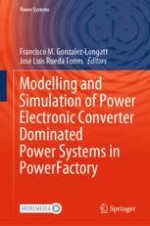This book provides an overview of power electronic converters for numerical simulations based on DIgSILENT PowerFactory. It covers the working principles, key assumptions and implementation of models of different types of these power systems.
The book is divided into three main parts: the first discusses high-voltage direct currents, while the
second part examines distribution systems and micro-grids. Lastly, the third addresses the equipment and technologies used in modelling and simulation. Each chapter includes practical examples and exercises, and the accompanying software illustrates essential models, principles and performance using DIgSILENT PowerFactory.
Exploring various current topics in the field of modelling power systems, this book will appeal to a variety of readers, ranging from students to practitioners.
